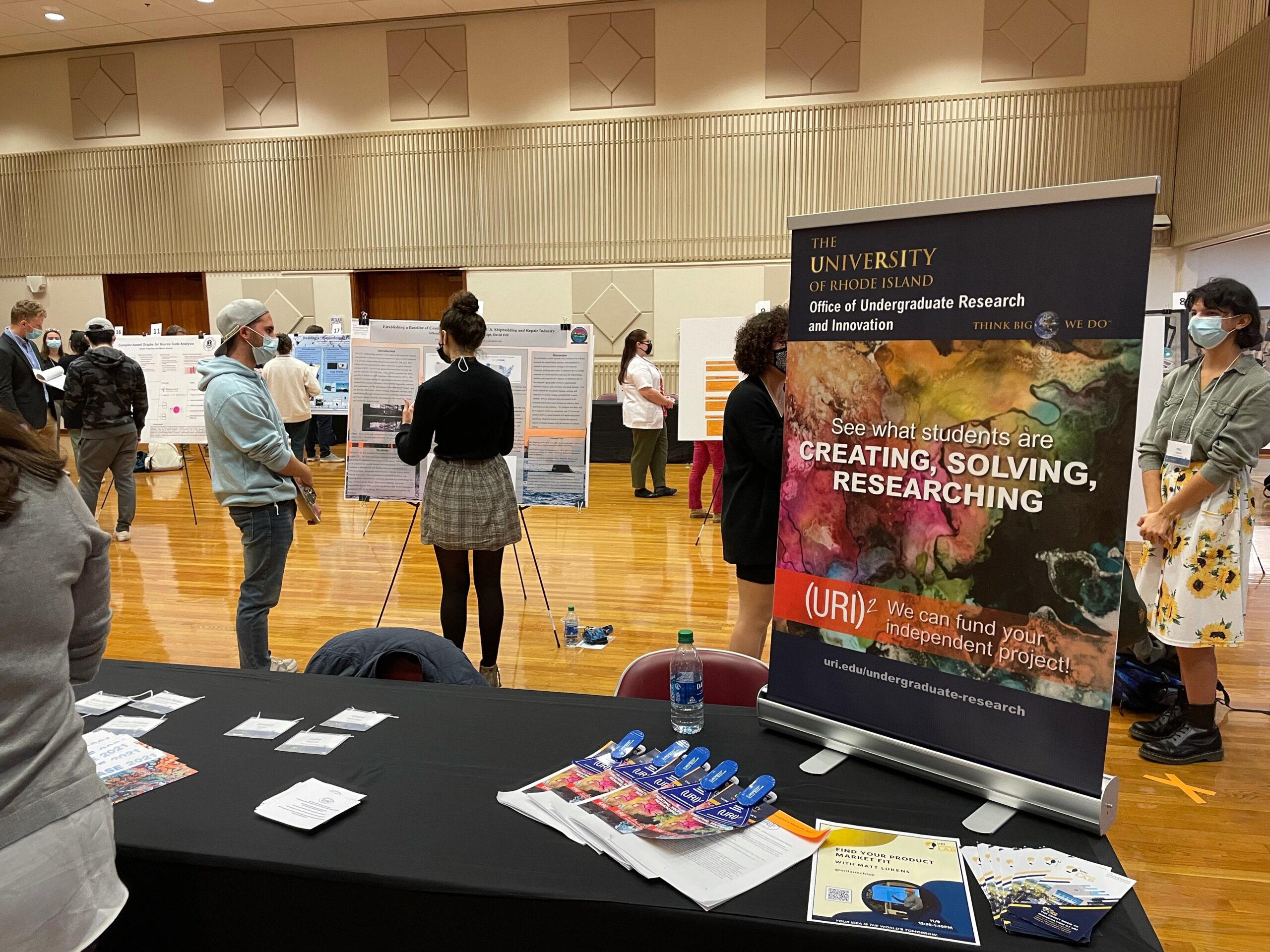Undergraduate students present findings, receive awards
To applaud those who conducted research over the summer covering various fields of interest, URI’s Undergraduate Research and Innovation holds an event. PHOTO CREDIT: Maddie Bataille
The University of Rhode Island Undergraduate Research and Innovation, or (URI)2, held its showcase for student research projects on Wednesday.
“You are the fabric, you are the life-blood, on what makes a research university great,” Peter Snyder, URI’s director of research said, thanking the participants for their hard work.
Snyder mentioned that the core mission of URI is to train the next generation of scientists, writers and artists about research. He said that the research URI students do will address some of the “greatest ills” that the planet currently has.
The research presented spanned topics from examining gendered spaces on campus to the effective sea-level rise to art, physics and photography.
Two student researchers received awards. Margaret Hill won the STEM Award for her research with shrimp. Audrey Visscher won the award of the College of Arts and Sciences for her research on lighting design in URI Theatre’s “A Silent Sky.”
Samantha Adams, one of the fellows and a junior majoring in physics and German, conducted her research on radio imaging of astrological sources.
Adams focused on two astrological sources that have been well observed because they shine bright and used radio imaging on them. She said that the data on the sources are spread out over many databases. Because they are so vast, according to Adams, most people look at the images in parts to understand them.
“[My goal was to] put all the data into one database, so that scientists can use it, and so the general public can get a look at this spectrum of astronomy,” Adams said.
Adams said she accomplished her goal by gathering, calibrating and inputting the data from the astronomical sources towards radio imaging. However, because Adams wants to fully look at the radio images, she is producing overlays of radio images with other data from x-rays, optical scans or gamma-rays.
She said that her favorite part of her research was the artistic aspect. Because she is a physics major, she said she doesn’t get to interact with art often. However, by overlaying radio imaging, she said she can combine what she likes about art and physics.
Adams started her research over the summer, and she anticipates continuing her work throughout her time at the University and possibly after graduation as well.
Abigail Dodd, a College of Arts and Sciences fellow and a senior history and gender and women’s studies double major, researched a social science topic for her project.
Dodd looked at women and their roles on URI’s campus between 1950 and 1973. She noted the ways that women were presented in academia and other parts around campus and followed the themes of history and feminism during the time.
“Women have always been key members of this community,” Dodd said. “They have always been active and engaged members of campus.”
What drove her to research this topic was her understanding of how general history and women’s history is separated.
“I think that is a disservice, and inaccurate,” Dodd said. “I think that any history that happens is intertwined with women’s history.”
The goal of the project, according to Dodd, was to put women back into the narrative of history. As one of the biggest struggles of the research was specifically having to find where women were involved due to the lack of attention their accomplishments may have gotten.
Through these vastly different subjects, junior Fatima Fernandez, an attendee of the event, mentioned that she was drawn to come to the event through hearing about the art pieces. However, Fernandez was pleasantly surprised at the array of topics to learn from.
“I think they are really interesting; it’s really nice to see everyone come lay their work out for you,” Fernandez said.
At the event’s close, the director of undergraduate research, Deedee Chatam, congratulated students researching from 39 different majors. This included everyone from first-years to seniors graduating this December, as well as representation from five different colleges at the University.

